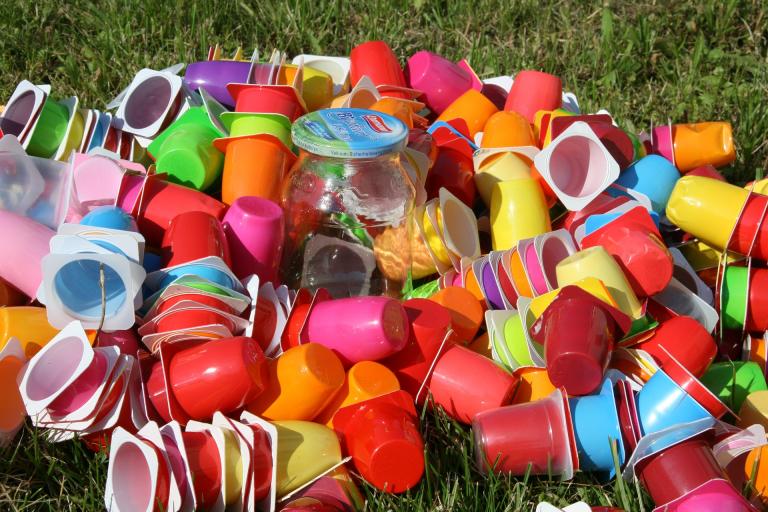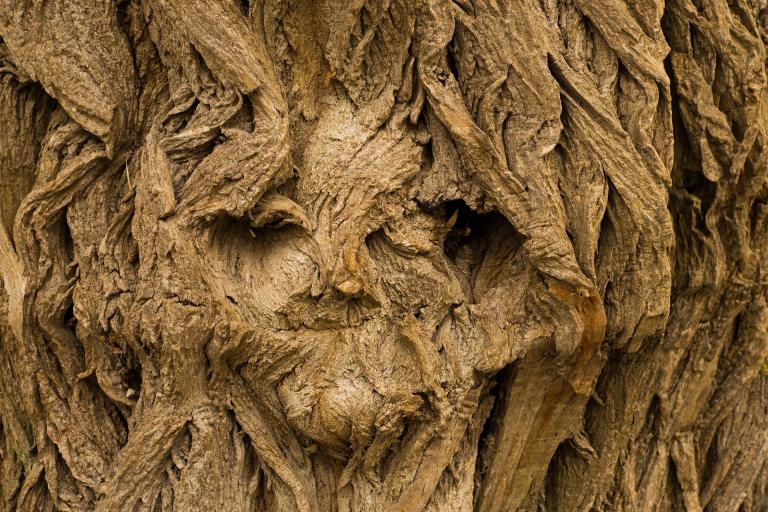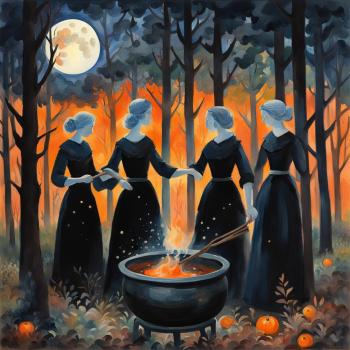There’s currently a thing going around some corners of social media suggesting, based as far as I’m aware on something from fiction, that fairies are now averse to plastic instead of iron. I’ve seen several iterations of this now from shared screen caps to people asking about it in folklore or fairylore-based groups. The general concept is rooted in the idea that fairies were averse to iron because it was unnatural or foreign and that plastic is more unnatural or new and unnatural so therefore now they would be averse to plastic and not iron. There is the additional idea with this that fairies have overcome their aversion to iron, adjusted to the metal, or developed a resistance to it.
I am genuinely concerned about this idea spreading particularly in American paganism which always tends to pick up on ideas from fiction and gaming and apply them to belief. So let’s try to untangle some of this.

Iron As ‘New Technology’
The idea of fairies being scared off by iron because it’s new human technology goes back to the late Victorian period and can be found in such popular works as The Fairy Faith In Celtic Countries. It is a concept that hinges on the idea that fairies, as Otherworldly beings, do not exist but rather were primitive misunderstandings of so-called real world phenomena, in this case folk memories or early interactions between different cultural groups or groups with different technology. More specifically this theory was usually explained as meetings between bronze-wielding people and invaders with iron weapons where the bronze-carrying people fled in terror from the new metal.
Basically fairies being afraid of iron because it was a newfangled human tech was a late 19th- early 20th century way of euhemerizing fairies.
There is no actual evidence of any sort to support the idea and it’s been largely discredited among modern scholars. It is still repeated in some places because it can be found in print sources and is in many, many public domain works.
Why Does Iron Affect Fairies?
Ultimately there’s no solid answer to this, but there’re many theories. A couple things to remember as we step into this discussion though: iron doesn’t protect against all types of fairies and never has, and iron protects against (many) fairies as well as ghosts and demons.
One possible reason given for the effectiveness of iron is the process that goes into its working, that is that there is some inherent apotropaic magic in turning iron ore into iron products. Another is that iron is simply protective against some spirits by its nature; the word for iron is rooted ultimately in words meaning holy, powerful, and strong*. A third is that iron is effective because it is the least electrically conductive metal next to lead and that it therefore grounds magical energy as well**; fairies as more magically in tune or natured beings would therefore be averse to a grounding element or one which disrupts their magic.

Plastic As The New Iron: The Concept
The idea of plastic being a replacement for iron to ward against fairies seems to have sprung from fiction and some questions relating to RPGs. The core idea behind people developing the concept as I’ve seen it is that if fairies were averse to iron because it represented new human technology then plastic as 20th century human tech should naturally freak the Good Folk out. Sort of an a = b logic.
Related is the idea that fairies have suddenly developed a resistance or immunity to iron, making it ineffective.
…Or Not
Plastic has been around since 1907 but stories of fairies avoiding iron persist into the 21st century, and there’re no new accounts in folklore or anecdotes of them avoiding plastic. It also must be noted that plastic is nearly ubiquitous and can even be found in most clothing not to mention at the bottom of the ocean and in places without human habitations. Humans have made plastic a real plague in this world. Meaning that if fairies were really averse to plastic we would have already entirely driven the Good Folk out of the human world.
Fairies as Nature Spirits
The other aspect to fairies now fearing or being warded by plastic is based on fairies being nature spirits in the most literal sense, and so averse to anything ‘unnatural’. From this view fairies would embrace anything organic and reject anything chemically produced with plastic as the easy target given its high profile for lack of composting. Fairies as nature spirits leans into the idea that fairies are a sort of environmental noble savage trope with wings.
Fairies, in toto, as nature spirits is another complicated discussion however. The idea, which is widespread in American paganism and elsewhere now, comes from an outgrowth of concepts shaped in theosophy and Victorian art and fiction and is widely at odds with folkloric understandings of fairies which are complex and nuanced.

Belief Rooted in Fiction Rooted in Some 19th Century Outsider’s Opinions
The real heart of the issue with this for me is twofold.
Firstly it’s completely ignoring modern beliefs in the cultures that these beings come from. I’m not denying that people who are studying fairies or come to active belief later in life (at any point) genuinely believe in them but there is a significant problem that comes from being disconnected from the beliefs as a living system then coming into that from fiction or gaming. It tends to bring with it an attitude that these beings are malleable and at the whim of humanity rather than that they have agency and are in a symbiotic relationship with humanity.
Secondly it’s more often than not building on sources found freely in the public domain that are terribly dated (hence why they are in the public domain) and are reflective of the personal opinions of upper class scholars outside the cultures they were writing about. In other words they are texts written by outsiders guessing at what might explain the living beliefs of the time in what they perceived was a rational way. Hence approaching fairies not as actual Otherworldly beings but as long lost memories of pygmies or Picts or Bronze age societies even though we now know there’s no archaeological evidence to support this.
What Folklore Says
Based on folklore and living cultural belief iron is the most ubiquitous protection against fairies. It isn’t because iron is ‘unnatural’ but because some fairies can’t seem to stand the metal itself in any form, which is why steel also works. We can find references across written and oral folklore to fairies being averse to iron and steel, in multiple cultures, up through today.
The why of this often isn’t discussed in depth among people who believe in it just as the effectiveness of turning clothes inside out to break being pixy-led isn’t, because people care more that it works rather than why exactly it works. When it is discussed it’s more theoretical guesses by people because no one really does know for certain. What we can say for certain is that it’s a well-documented belief and one with history to it.

My Thoughts On All Of This
Of course not all fairies are warded off by iron because nothing applies equally to all fairies. Some are warded off by salt, or rowan, or Christian prayers and symbols. The Good People are a diverse lot. And perhaps there are those that are averse to plastic just as there are those that we might categorize as nature spirits, even though it doesn’t apply to the majority. I also believe that fairies and fairy beliefs evolve which must always be taken into account, but every new idea that floats out there shouldn’t be jumped on and accepted. Critical thinking is important even about something as simple as how this would actually, practically function.
I must admit I am unsure why the focus here is on plastic specifically and not, say, modern mass-produced foods which have lots of chemical additives but people don’t hesitate to use as offerings. It’s also ignoring the precedent of fairies borrowing or mimicking human technology, such as we see with mills (Briggs discusses this in her books).
I would be very cautious about embracing the idea of fairies being afraid of or warded off by plastic without giving careful thought to how much plastic actually is around you at all times, whether or not you like the idea for your own spiritual beliefs or for fiction/gaming. Just as many people aren’t aware of what is and isn’t iron around them, people are rarely aware of how much plastic surrounds them constantly. I would also suggest, as always, looking to living cultural belief rather than fiction and gaming for source beliefs and being very discriminating with written sources.
*https://www.etymonline.com/word/iron
**https://www.allmetalsfab.com/metal-best-conducts-electricity/
It is interesting to note, going with this theory, that silver is the most conductive metal and the most popular in many forms of witchcraft for magical workings.

















